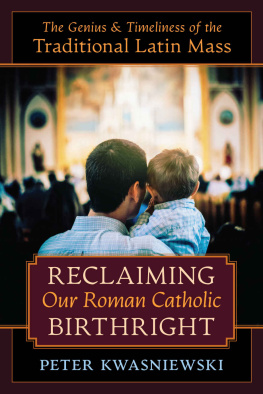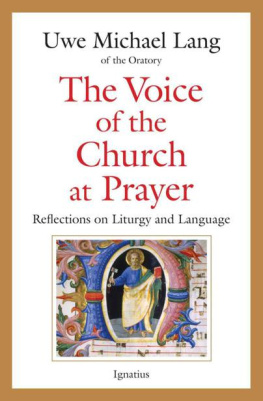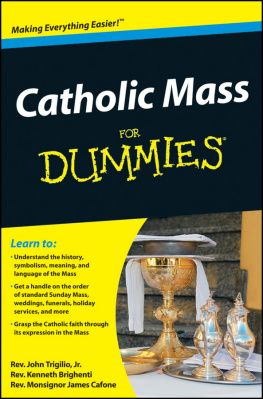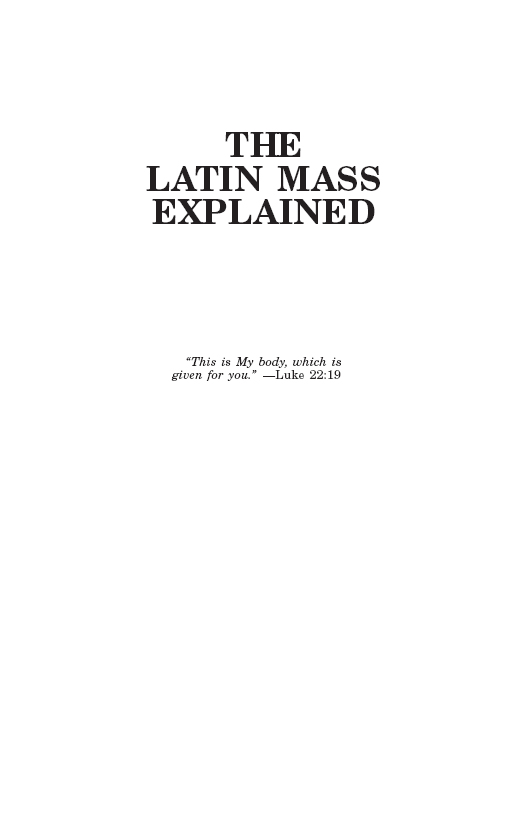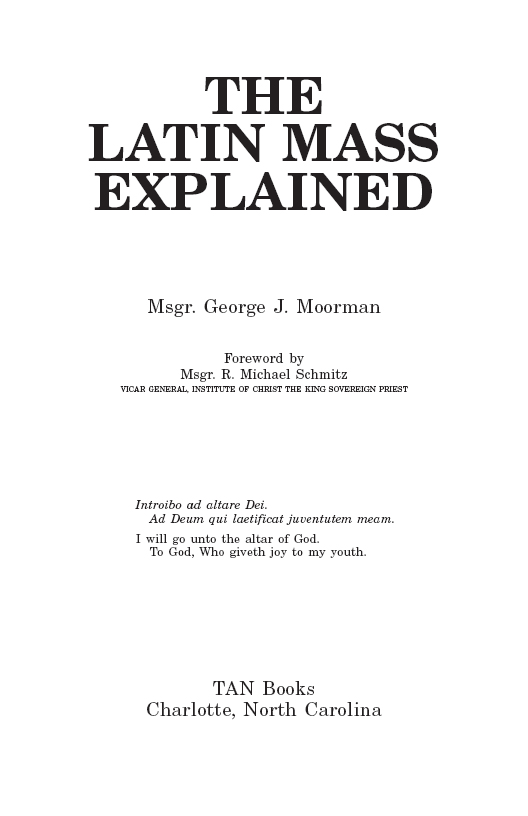F OR from the rising of the sun even to the going down, My name is great among the Gentiles, and in every place there is sacrifice, and there is offered to My name a clean oblation: for My name is great among the Gentiles, saith the Lord of hosts.
Foreword
By Msgr. R. Michael Schmitz
F REEDOM is one of the greatest gifts the Almighty has bestowed on man. Through this gift, we are really formed to His image, because among all earthly creatures He gives us the unique opportunity to embrace His will freely, to accept it, and to make it fully ours. The wealth of possibilities this capacity opens to everyone is unfathomable, and it is for this gift that man has been rightly called the crown of creation.
Holy Mother Church is a reflex of this freedom because she is the continuation of the Mystery of the Incarnation and Salvation in this world. Through her, the Redeemer not only re-creates our lost freedom by taking away the slavery of sin, but also blesses us with unending graces to secure a true life of freedom for those of good will. This liberality of God is visible in the liberality of Holy Mother Church, who gratifies her children with all the riches one needs to survive in this poor and spiritually starving world.
Thus, it would seem unnatural to this generous Mother to withhold from us the treasures of beauty and wisdom which, throughout the centuries, have led innumerable of her children to the glory of Heaven. Pope Benedict XVI underscores this truth in the introduction of his Apostolic letter Summorum Pontificum : It is known, in fact, that the Latin liturgy of the Church in its various forms, in each century of the Christian era, has been a spur to the spiritual life of many saints, has reinforced many peoples in the virtue of religion and fecundated their piety.
Consequently, the freedom of grace of the children of God postulates, from the motherly generosity of the Church, that present and future generations of the faithful should have free and large access to the fullness of the liturgical forms the Holy Ghost has created as an appropriate expression of the glorification that the whole Mystical Body of Christ owes constantly to the Triune God, Creator, Redeemer and Sanctifier of the human race.
Providentially, therefore, and with a gesture of loving largesse after the example of the heavenly Father, the visible Father of Christianity has granted motu proprio , of his own initiative, a decree that throws the doors of the liturgical treasury of the Latin Church again wide open for clergy and laity alike. The Holy Father appeals to the wisdom and charity of the Bishops to understand and implement his disposition, which is meant to be a sign of reconciliation inside and outside the Roman Catholic Church. In this intent, it has already borne fruit and received praise and recognition worldwide.
Freedom needs guidance. The liturgical richness of the extraordinary form of the Latin Rite shows in many ways that the sacramental mysteries instituted by Christ are a beginning of the eternal freedom and a glimpse of the glory of Heaven. Hence, in these lands of shadow and sinfulness where human frailty finds a path to the light with great difficulty, Holy Mother Church, under the direction of continuous inspiration from above, has organically developed forms and details to guide our steps to a divine worship that guarantees our contact with the Godhead and at the same time elevates our soul and body to a genuine piety nourished by the grace of Christ.
This is exactly where books like the present one come to play an important role. At all times, the Church has invited both her priests and all her faithful to love and cherish her liturgy. The clergy especially need to have a profound knowledge of the mysteries of which they are called to be the faithful ministers. Those among the laity, however, who have wanted to follow more closely the universal call to holiness have likewise been interested in deepening their knowledge about the theological and ceremonial meaning of the Holy Sacrifice of the Mass. Thus, many approved authors, at different times and under various aspects, have explained the liturgical life of the Church with great expertise. Among the more important were Durandus a Mende, the holy Cardinal Tommasi di Lampedusa, Blessed Dom Marmion, Blessed Cardinal Schuster, the Fathers Sterky, Fortescue, Eisenhofer and Gihrand many others could be mentioned.
Today, knowledge of the extraordinary form of the Latin Rite is not widely spread. Pope Benedict XVI has pointed to the reality of the lack of a general liturgical formation in the letter to the Bishops issued together with the motu proprio about the classical liturgy : The use of the old Missal presupposes a certain degree of liturgical formation and some knowledge of the Latin language; neither of these is found very often. While many of the young clergy and many lay youth are deeply impressed by the classical liturgy which they may happen to discover, few have teachers or literature at hand to be instructed in order to understand even better what they already admire.
The re-publication of an introduction to what is today often called the Latin Mass or the Traditional Latin Mass is therefore not only most timely, but fills to some extent a gap which needs to be closed at many levels. The present work by Monsignor George J. Moor-man, in his time a well-known liturgical scholar with long practical experience, on the one hand contains much detailed explanation of the individual ceremonies and rubrics, but, on the other, remains accessible and clear so that those unfamiliar with the extraordinary form can use the book with profit.

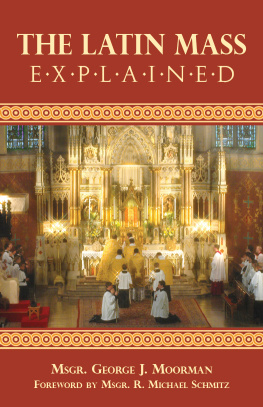

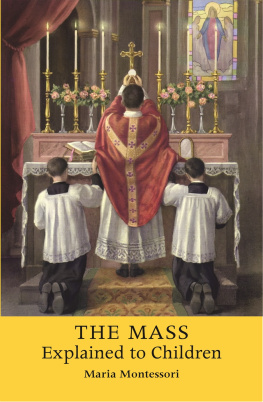
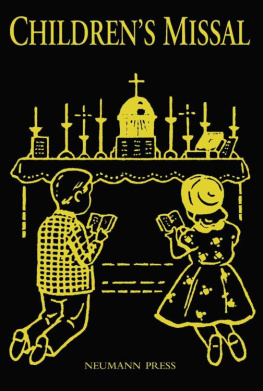
![Pope John XXIII - The Roman Missal [1962]](/uploads/posts/book/272720/thumbs/pope-john-xxiii-the-roman-missal-1962.jpg)
